A Blend of Cultures and Beliefs in Bangkok’s Heart
For devotees of Uma – Parwati, the Hindu goddess often depicted alongside Lord Shiva, visiting Big C Ratchadamri to seek blessings from her statue is a familiar act of devotion. Yet, have you ever wondered if the name and the image of the “Goddess Uma” at Big C really align?
Nai Mu from Ticy City offers insights into this fascinating topic, sharing the story of Tara Devi to help devotees understand the spirit of whom they’re truly venerating.
At Big C Ratchadamri, the statue—often identified as “Uma – Parwati”—features a distinct Tibetan-style design. Interestingly, a more fitting name for this statue might be “Tara Devi,” a goddess embodying compassion and protection as an incarnation of Avalokiteshvara. Much like Guan Yin in Chinese culture, Tara is a beacon of mercy.
This unique blend of cultural and spiritual symbols creates a one-of-a-kind experience in Bangkok’s Ratchaprasong district.
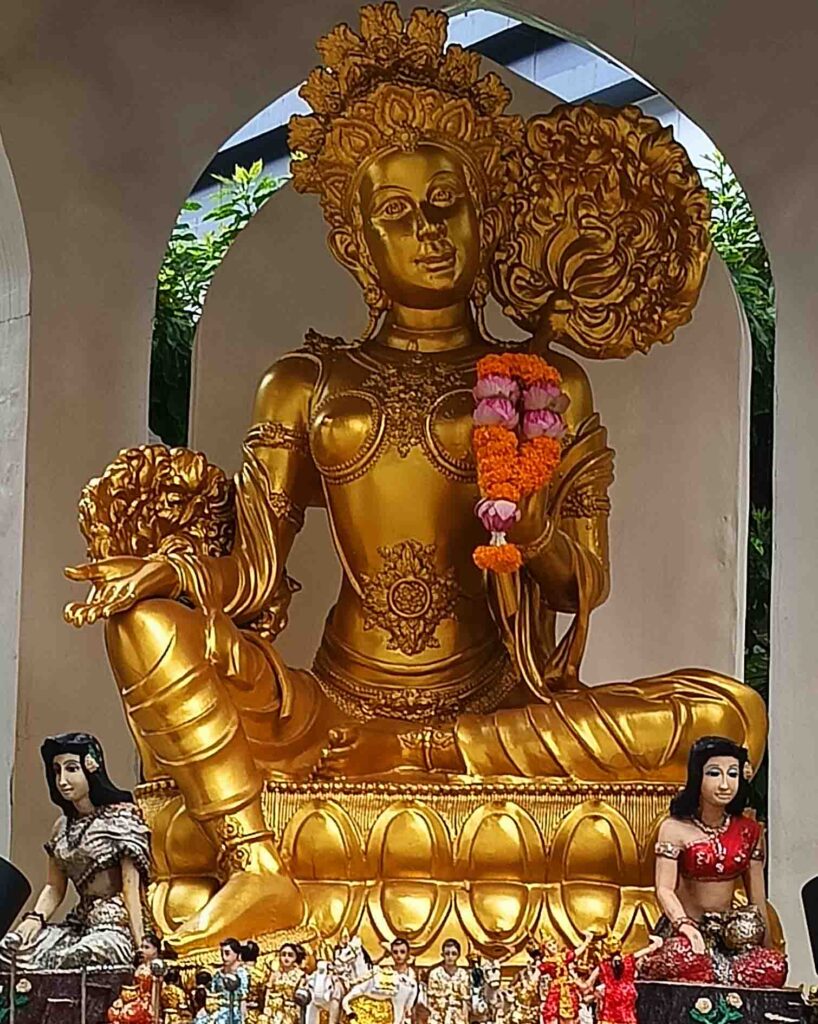
Known as “Tara, the Tibetan Bodhisattva”, this statue’s Hindu name, “Uma – Parwati,” is coupled with Tibetan, Chinese, and Thai influences, symbolized by Chinese lions, Thai spirit house figures, and a range of offerings—red soda, fruit juice, milk, and water—that span these traditions. This fusion of Thailand, China, India, and Tibet’s cultural elements makes Big C’s Tara statue a rare landmark.
Uma and Her Form as “Tara”
In the Shakti tradition, Tantra texts praise ten powerful goddesses, collectively known as the Mahavidya. These include Maha Kali, Tara, Sodashi, Bhuvanesvar, Bhairavi, Chinnamasta, Bagalamukhi, Dhumavati, Matangi, and Kamala.
Tara, often called the “Mother of the Universe,” embodies the guiding force and supreme wisdom that leads to liberation. During the famous Scene of the Churning of the Milk Ocean, Lord Shiva saved the world by consuming a deadly poison from Vasuki. As the poison spread, Parwati took the form of Tara Devi to save him, allowing him to nurse from her to draw the poison from his throat.

Hindu Tantric Tara is traditionally portrayed with a blue body, unruly hair, a crescent tiara, three eyes, a garland of skulls, and tiger skin attire, wielding scissors in one hand—a powerful image that distinguishes her from Kali.
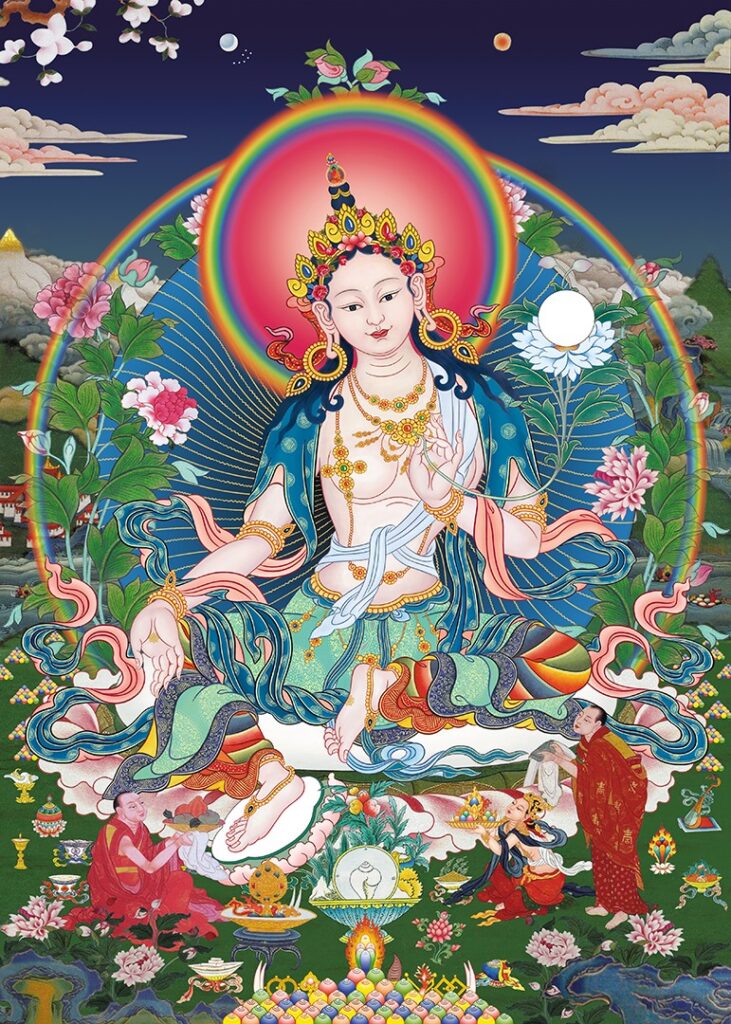
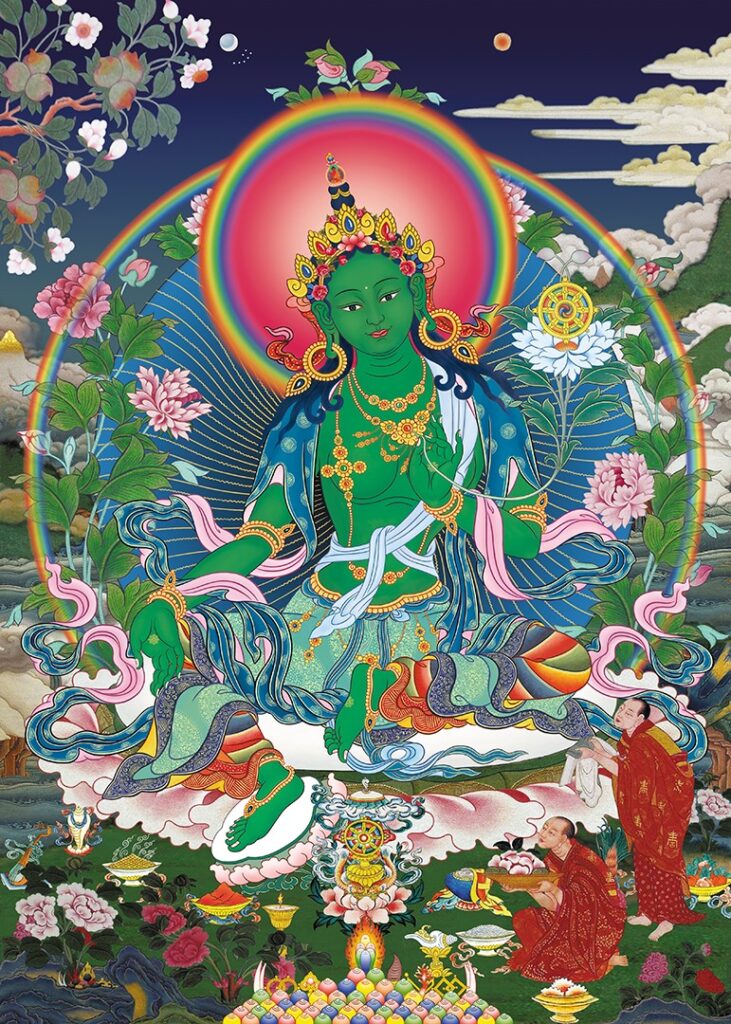
The Tibetan Legend of Tara
Green Tara’s mantra is “OM TARE TUTTARE TURE SOHA”, while White Tara is honored with “OM TARE TUTTARE TURE MAMA AYUR PUNYE JANA PUNTI KURU SOHA.”
In Tibetan Buddhism, Tara, known as Jetsun Dolma in Tibetan, is an expression of deep compassion. Vajrayana texts share varying stories of her origin, one of which describes Green Tara emerging from Amitabha Buddha’s green light. Another tradition says she was born from the compassionate tears of Avalokiteshvara as he witnessed humanity’s suffering. His left tear became White Tara, symbolizing longevity, while his right tear became Green Tara, offering nighttime protection.
During the 11th century, King Songtsan Gampo of Tibet married Bhrkuti Devi from Nepal, associated with Green Tara, and Wencheng from China, revered as White Tara. These two queens brought Buddhism’s teachings into Tibet, further cementing Tara’s status.

Looking upon the “Goddess Tara” statue at Big C Ratchadamri, you may wonder: does the title of “Goddess Uma” accurately represent her true identity? Knowing the story and essence of the deity you’re worshiping ensures that your prayers are directed properly, with the blessings intended for you.











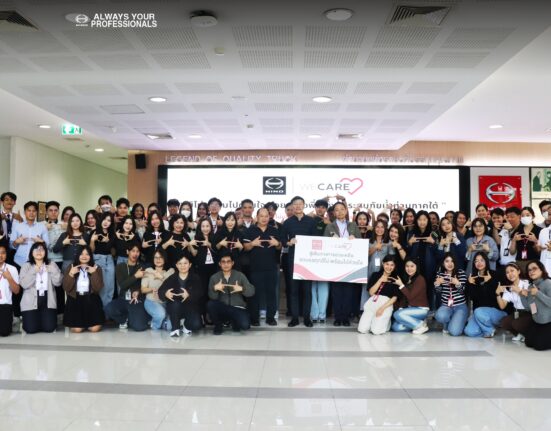


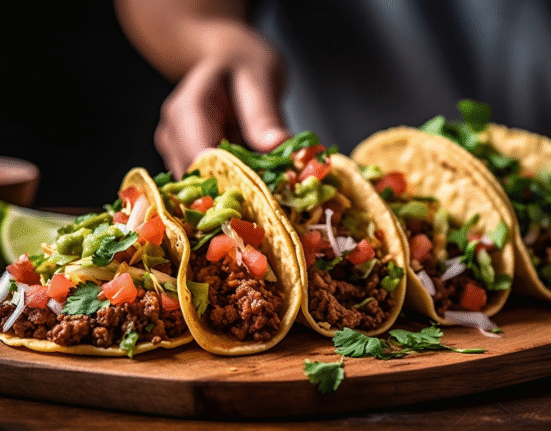
Leave feedback about this